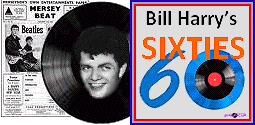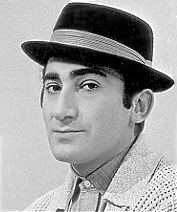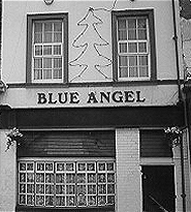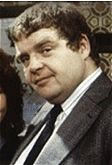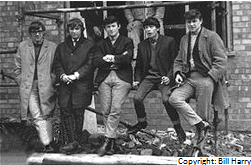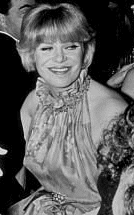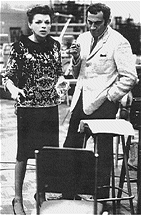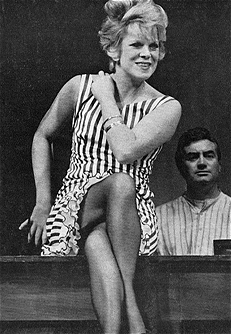 |
Georgia
Brown, the leading lady from Bart’s ‘Oliver’ musical, turned down the
part of the prostitute Mary May Duffy and Welsh actress Rachel Roberts,
who was married to Liverpool actor Rex Harrison, took on the role. Roberts
left the production prematurely and was replaced by Brown, who’d changed
her mind. The male lead of Patrick Casey was filled by Kenneth Haigh,
who’d appeared in ‘A Hard Day’s Night'. Incidentally, the yet unknown
Barry Humphries opened the show as a one-man-band singing ‘The Ballad
of the Liver Bird’, but he left during the run.
The musical was set in the early Sixties, although the prologue, ‘Ballad
of the Liver Bird’ was set 20 years earlier when Margaret May Duffy
and Patrick Casey, as children, are taking part in a Holy Week passion
play. By the end of the sequence, Pat’s union leader father Joe Casey
is dead, a martyr to the dock worker’s cause.
Two decades later, Margaret is known to all as Maggie May, the local
prostitute who calls all her clients 'Casey' as she waits for her childhood
sweetheart. When he comes home from the sea, Pat Casey is reluctant
to take up where his father left off, although the local dock workers
expect him to. Casey finds himself unable to avoid leading a strike.
Near the end, Maggie and Casey at last commit to each other but, during
a final act of defiance by the dockers, Casey is killed. Some people
regarded it as a contemporary retelling of the Christ story with Maggie
May as Mary Magdelene and Casey as the carpenter.
The soundtrack was issued on TER 1046 and the singers were: Billy Boyle,
Fred Evans, Paul Farrell, Michael Forrest, Kenneth Haigh, Barry Humphries,
Andrew Keir, The Nocturnes, Diana Quiseekay and Rachel Roberts. The
album tracks were: Overture/The Ballad of the 'Liver' Bird; Lullaby/I
Love a Man; Casey; Shine You Swine; Dey Don’t Do Dat T’Day; I Told You
So; Right of Way; Stroll On; Away From Home; Maggie, Maggie May; The
Land of Promises; Leave Her, Johnnie, Leave Her/The Land of Promises
(Reprise); Carryin' On; There’s Only One Union; It’s Yourself; The World’s
A Lovely Place; I'm Me; We Don’t All Wear D’Same Size Boots; It’s Yourself
(Reprise); Finale/The Ballad of the 'Liver' Bird (Reprise). |

